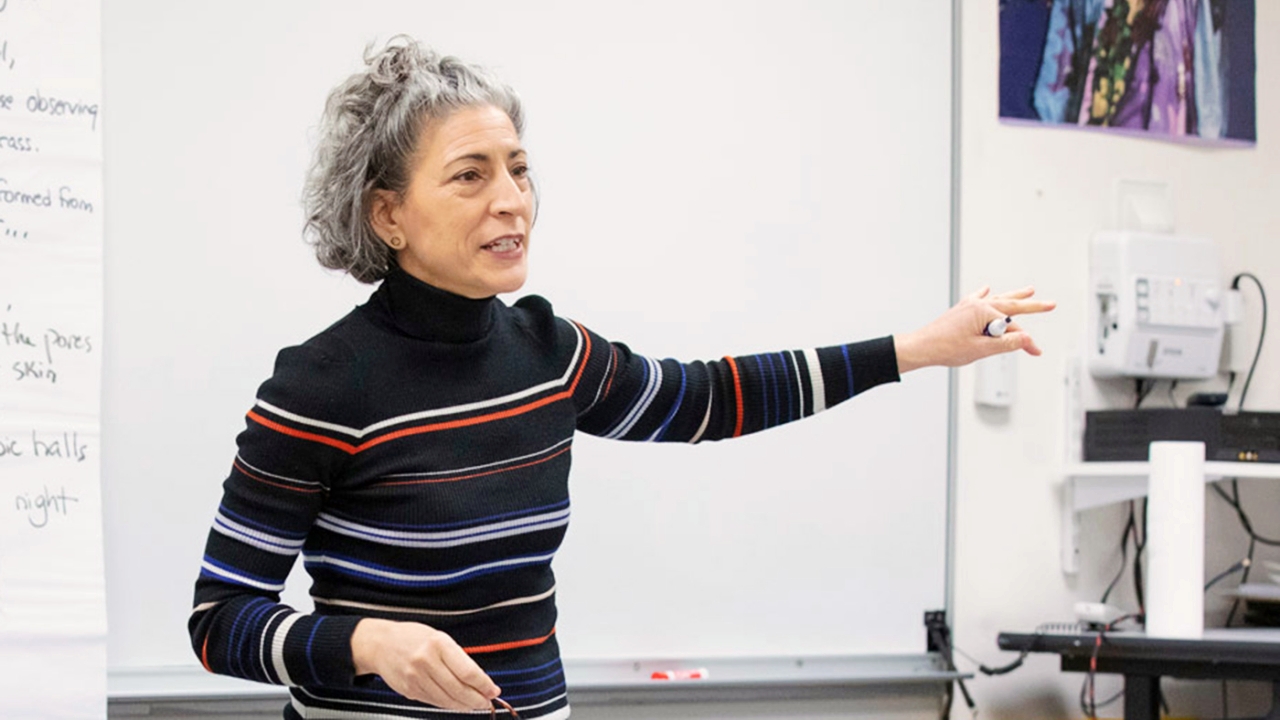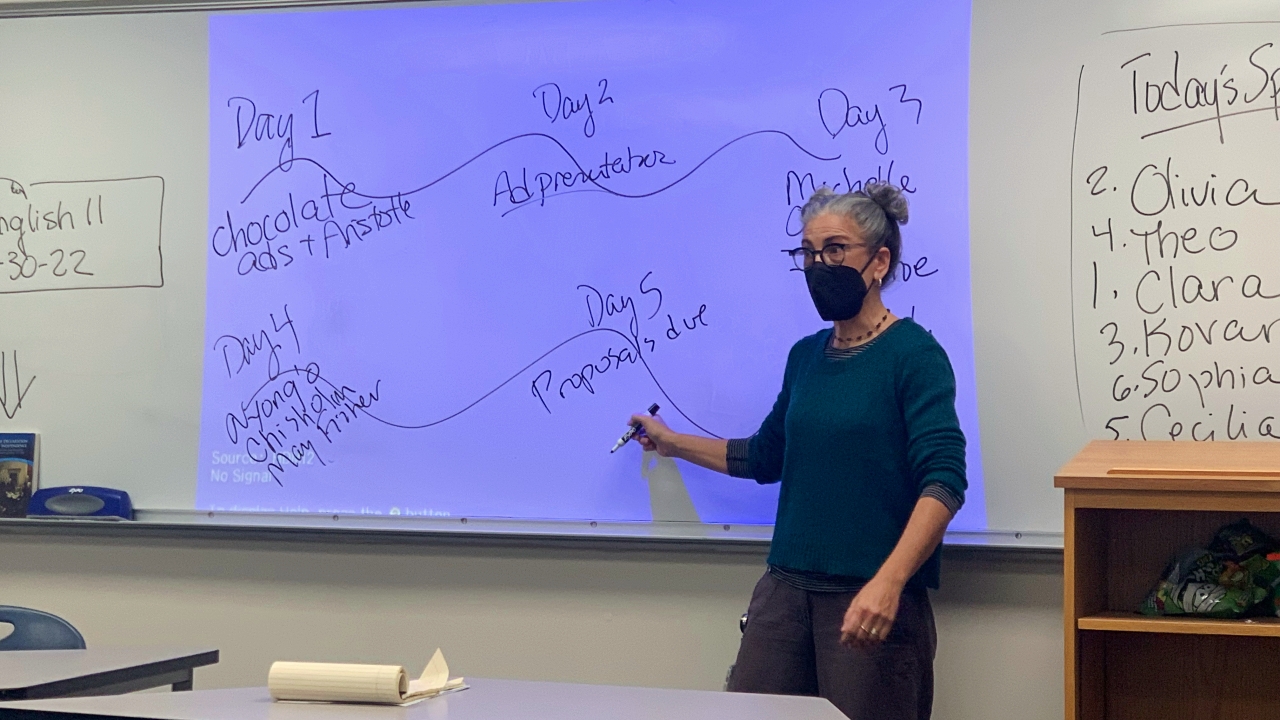As part of her process for getting to know GDS during her first year as Associate Head of School, Meg Goldner Rabinowitz has been visiting classrooms to learn first-hand about the excellent teaching and learning for which our School is known. In this series, she shares some of her reflections—through her lens as an educator and school leader—as a sort of annotated glimpse into life and learning at GDS.
I was so excited when English teacher Nadia Mahdi invited me to her class to observe her 11th grade students deliver persuasive speeches on individual topics of personal interest to them based on the principles of Aristotle (ethos, pathos, logos, kairos) and Alan Monroe (get attention, establish the need, satisfy the need, visualize the future, call to action). For many years, I taught my 10th grade English students similar rhetorical devices when they crafted their own manifestos, so I was eager to hear the students’ presentations and observe the classroom practice for providing feedback.
Nadia has such a wonderful rapport with her students, evidenced in the way she welcomed them to class and provided elegant structure to the exercise. I was there for the final day of presentations at the end of the unit. The speeches ranged in topics from the need to address the prevalence of suicide in college athletes or the need to eliminate standardized testing in the college admissions process to the need for an extra day to be added to the weekend or the need for GDS to consider offering a men’s volleyball team. The speeches were effective, and each employed an effective range of techniques described by both Aristotle and Monroe. After each speaker, Nadia called on two different students to identify the strategies employed by the speakers. She then added her own perspective and appreciation.
It was a great class. Productive, focused, student-centered, and engaging. But that wasn’t even the best part.
After the last speech and feedback concluded, Nadia asked the students to move into pairs. She then instructed them to reflect on the last three weeks of class, beginning with the first class of the year (the first day of the unit). She asked them to consider the various class exercises and assignments they had participated in over the course of the unit. After they quickly generated a list, Nadia asked students to order the activities in sequence as a whole group. Finally, she asked them to reflect on which were particularly useful, which were less helpful, and what changes they would suggest for next year. Students offered excellent ideas and all participated in this great discussion.
I was blown away. Nadia’s approach was the very definition of engaging students in a reflective process, one that invites their critical lens and one that constructs and reinforces the teacher’s intentionality. It was a 15-minute exercise, one that left the students with a true sense of the arc of the unit, following their culminating speeches. After being witness to an example of such exemplary teaching, I can’t wait to observe other classes.



